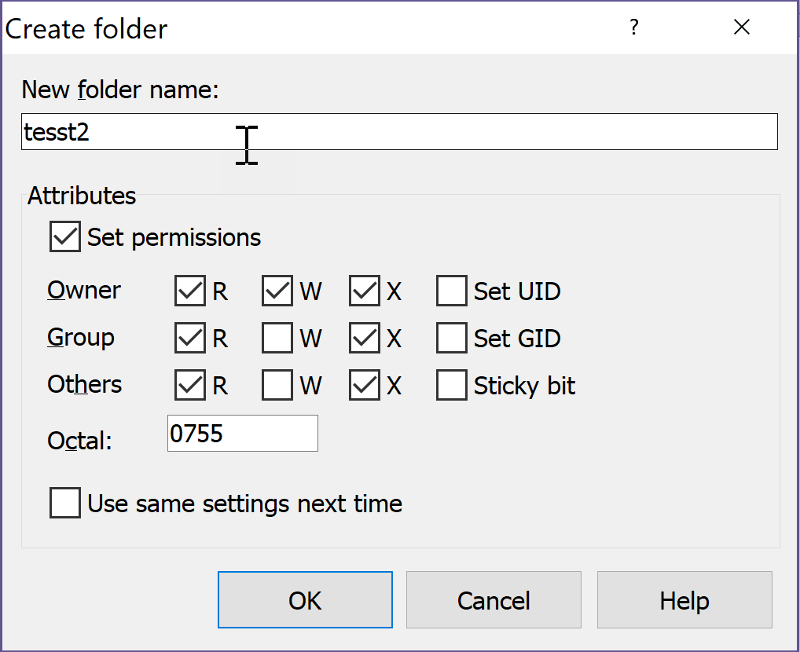
The Unix shell attempts to expand the wildcard before For example, thisĪttempt is likely to fail: $ scp1 :*.txt. Watch out for wildcards in remote file specifications, as they areĮvaluated on the local machine, not the remote. It simply lets the shell expand them: $ scp *.txt : Handling of Wildcards scp for SSH1 and OpenSSH has no special supportįor wildcards in filenames. Only if username is omitted and path is presentħ.5.2. $ scp as above, but copying from bob's to jen's account Table 7-3 summarizes the syntax of an Here are a few complete examples: $ scp myfile myfile2 Path) The file ~bob/dir/MyFile on The file /dir/MyFile on (although youĪuthenticate as bob, the path is absolute) #2000: The remote user's home directory on, via TCP port 2000 Home directory on :/dir/MyFile The file /dir/MyFile on (note the absolute The trailing colon again) The file ~bob/MyFile on :dir/MyFile The file dir/MyFile in the remote user's The current directory on localhost : The directory ~username on A local file named "" (oops: did youįorget the trailing colon - a common mistake) :MyFile The file MyFile in the remote user's homeĭirectory on The directory ~bob on A local file named (oops forgot MyFile on localhost MyDirectory The directory. Either the hostname (2) or the directory path (3) must be present. If omitted entirely, the path isĪlthough each field is optional, you can't omit them all at the Relative to the default directory, which is theĬurrent directory (for local paths) or the user's homeĭirectory (for remote paths). (Optional if the hostname is present.) Relative pathnames are assumed The directory path to the file or directory.Optional TCP port number for the SSH connection toīe inserted between the hostname and the colon, preceded by a hash Present, and the username isn't if omitted, the value is The hostname of the host containing the file orĭirectory, followed by a colon.The value is the username of the user invoking Or directory, followed by This part is optional and if omitted, The username of the account containing the file.Name-of-destination may have the following form As your multiple files get copied into a singleĭestination file, each is overwritten by the next. "must," but technically you may specify a file as aĭestination in some cases. In other words, multiple files and directories may be copied only If name-of-source is two or more files, one orĭirectory into which the copy takes place.May be copied to another file or into a directory. Name-of-destination may be a file (existing or Manner (it is fairly consistent with the behavior of Unix The command line represents files or directories in the following General: scp name-of-source name-of-destinationĮach of the two names, or path specifications, on Test sudo rights: sudo ls -la /root - if you can view the contents of the root folder and don’t get an error, the user has sudo rights.We've described the syntax of scp only in.Ssh-keygen -y -f ~/.ssh/id_rsa > ~/.ssh/id_rsa.pubĬat ~/.ssh/id_rsa.pub | pbcopy or pbcopy PEM is a text file so you can open it in notepad and check its contents.Ĭreate public/private keypair with comment. They can contain anything - a certificate with a public key, an SSH public key, public key + private key, certificate with a public key + private key.



Difference between private/public keys and. Goal: Upload the file file_name.txt to your server into the folder /path/to/directory of the username user: Prerequisite: You generated an ssh connection as described above with the public key my_key.pub. SCP - Secure Copy - File transfer Send file from local drive TO server via SCP Now you can connect with this user with same ssh private key conveniently.Add details to ~/.ssh/config on localhost.Follow these instructions to add user to account and provide him with ssh access.At the bottom is one with many upvotes!Ĭreate a new user and give him ssh public key of first user This SO article discusses different solutions.See this elaborate article and this SO summary.Įxample: Two different bitbucket accounts In case you use several ssh keys, make sure to run ssh-add -D to delete the cached SSH key(s). Use the ssh-add command to add the identity to the authentication agent this means never having to specify the.private key) to the ~/.ssh directory (create it if necessary) Add a new public/private key pair with ssh-add ~/.ssh/KEY_PAIR_NAME.pem (or ssh-add ~/.ssh/MY_PRIVATE_KEY).Run ssh-copy-id Now ssh will log you in automatically.
SCP SSH COPY FOLDER PASSWORD
ssh into the server the first time using password or generated private ssh key (using one of the above methods).Ssh-copy-id uses your public ssh key to login into remote servers

Cat ~/.ssh/id_rsa.pub | ssh "cat > ~/.ssh/authorized_keys" Alternative 3 with ssh-copy-id


 0 kommentar(er)
0 kommentar(er)
